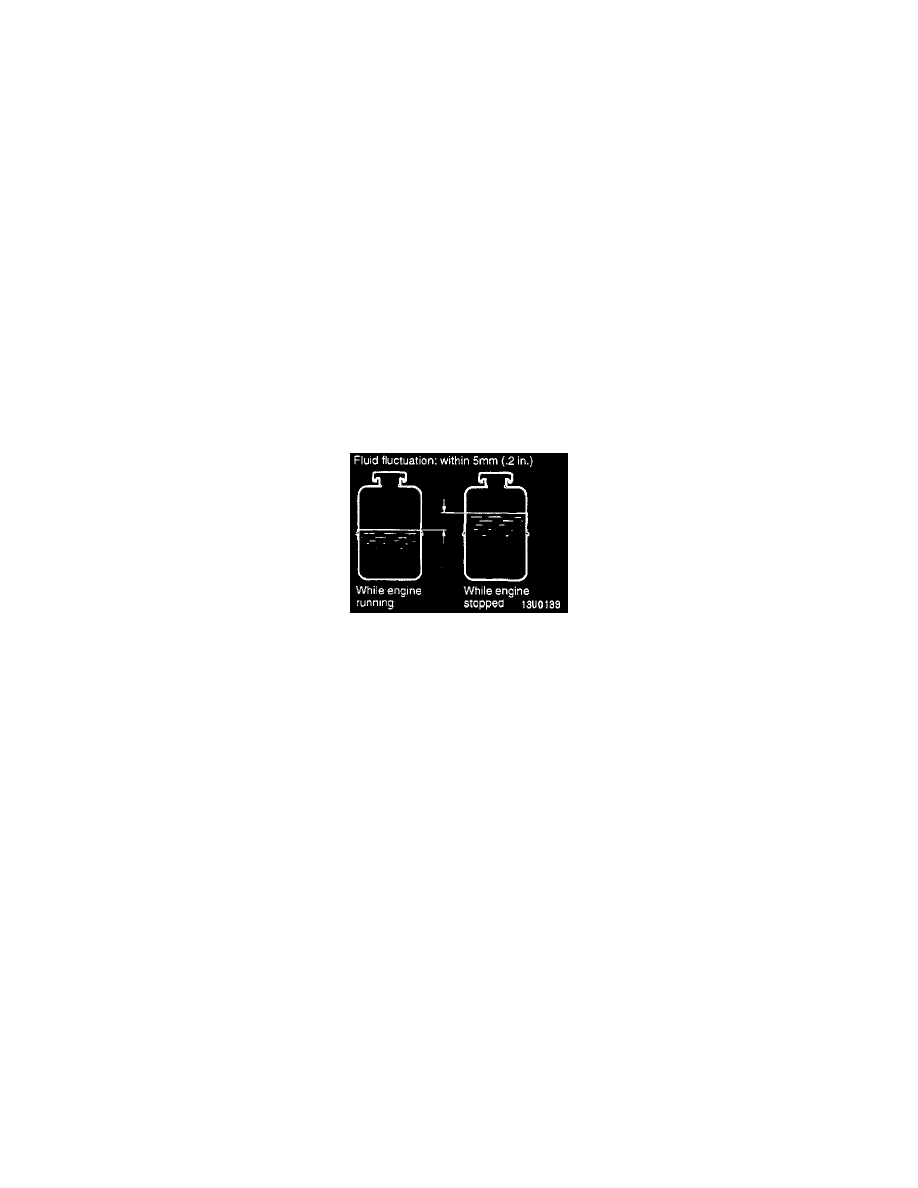Montero 4WD V6-3.5L SOHC (1998)

Power Steering Fluid: Service and Repair
Bleeding System
Check the stationary steering effort. If it is different from the standard value, there is probably air in the system, so bleed the system.
NOTE: After removing and installing the oil pump, loosen the drive belt and turn the pump pulley by hand several times to supply steering fluid to
the pump.
1. Disconnect the ignition power transistor connector (6 pin).
2. Jack up the front wheels and support them by using a rigid rack.
3. Turn the steering wheel all the way to the left and to the right five or six times.
4. While operating the starting motor intermittently, turn the steering wheel all the way to the left and right five or six times (for 15 to 20 seconds).
CAUTION:
-
During air bleeding, refill the steering fluid supply so that the level never falls below the lower position of the filter.
-
If air bleeding is done while engine running, the air will be broken up and absorbed into the fluid; be sure to do the bleeding only while
cranking.
5. Confirm that the steering fluid level is between the high and low marks on the dipstick.
6. Reconnect the ignition power transistor connector
7. Start the engine and allow it to run at idle.
8. Turn the steering wheel to the left and right. Repeat until there are no air bubbles in the oil reservoir fluid.
9. Confirm that the fluid is not milky, and that the level is up to the specified position on the dipstick.
10. Confirm that there is very little change in the fluid level when the steering wheel is turned to the left and right.
11. Confirm whether or not the change in the fluid level is within 5 mm (0.20 inch) when the engine is stopped and when it is running.
12. If necessary, repeat the bleeding procedure until the fluid is not milky (no bubbles) and the power steering pump makes no noise while engine is
running at idle.
CAUTION:
-
If the change of the fluid level is 5 mm (0.20 inch) or more, the air has not been completely bled from the system, and thus must be bled
completely.
-
If the fluid level rises suddenly after the engine is stopped, the air has not been completely bled.
-
If air bleeding is not complete, there will be abnormal noises from the pump and the flow-control valve, and this condition could cause a
lessening of the life of the pump, etc.
